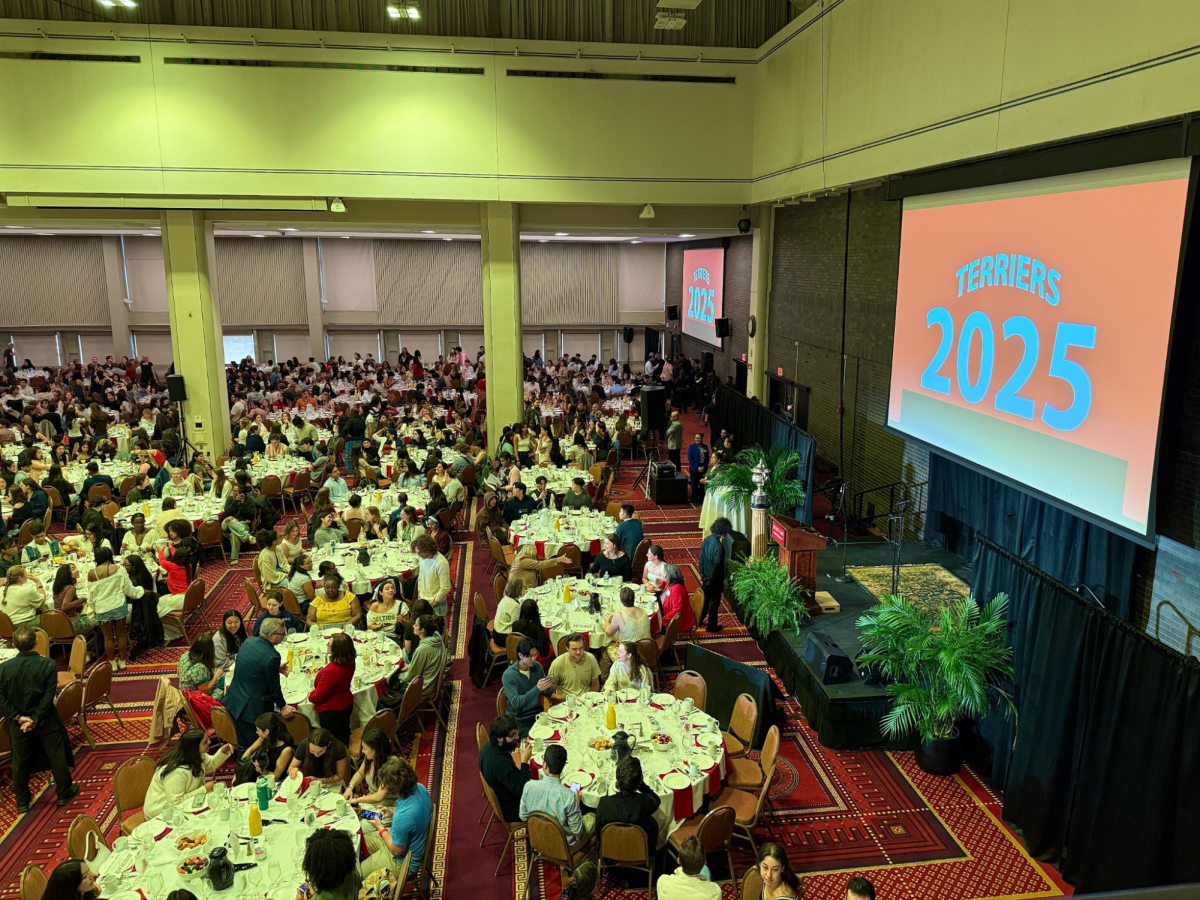Just as many Boston University students have been in an uproar over this year’s reduced print quota, some faculty members have also experienced trouble adjusting, especially given the late notice of the change, they said.’
Others, meanwhile, said they had not noticed any impact from the reduced print quota.
‘I haven’t changed that much,’ Writing lecturer Amy Chmielewski said. ‘I still have my students print out the readings. It’s under 100 pages, so it’s still cheaper than textbooks.’
President Robert Brown apologized for not telling faculty members about the change earlier, which would have allowed them to adjust students’ access to material, according to an Oct. 14 Daily Free Press article..
‘Because we didn’t give them enough time, they were using this mentality that students had free printing on the other side,’ he said in an interview with the Daily Free Press last week. ‘And that cut you in a bind.’
In lieu of printing, faculty are encouraged to use Blackboard and CourseInfo, which allow faculty to post online readings, lectures, collect papers and distribute assignments as well as students to upload assignments. But there is no official program in place to train faculty to use Blackboard, Associate Dean for Undergraduate Programs Wayne Snyder, who was involved with the print quota reduction, said in a Nov. 19 email.
Snyder said students will be the ones who encourage the faculty to reduce printing.
‘I think that the students can be in the forefront of this discussion,’ he said. ‘And they above all people will be the most willing to take their work habits in new directions that decrease the use of paper.’
Some faculty said Blackboard training would be an important step in the transition.
‘I think it’s a good thing but I think we needed to have the faculty introduced to alternatives in a better way,’ journalism professor Susan Walker said. ‘I kind of self-taught myself how to use a digital drop box technology. It wasn’t easy. It was not part of the training over the summer.’
But even though the technology exists to move almost entirely online, there has been some opposition to the switch, faculty members said.
‘I understand some resistance because I don’t really like reading off-screen, but if I’m requiring up to 50 or 60 students to submit assignments, I just better get used to it,’ Walker said. ‘There is some resistance to it, I know colleagues who don’t even look at the Blackboard software. By the end of the year ,we should all be trained to do this.’
Academic departments that do not rely heavily on printing have not experienced many drawbacks from the quota reduction, faculty said. Mathematics Department Staff Coordinator Alyson Savoie said she was unaware of the print quota reduction.
‘We haven’t had a decline,’ she said, ‘Nothing’s really been affected.’
Associate physics professor Robert Carey said he was also unaware a quota had been imposed. Like the other departments, physics research groups have their own printers that do not have a print quota.
‘Physics doesn’t have a lot of outside reading, while for a lot of courses the readings are very wide,’ Carey said. ‘I don’t hand out anything to my students.’
Some departments, however, said they have felt the print quota decline. Walker said she is acutely aware of the reduction in allotted pages, but feels it is beneficial.
‘It’s saving trees and saving paper and saving money,’ she said.
‘My opinion is yes, it’s tough to have a 100 page quota and it seems kind of low to me,’ Walker said. ‘But if we all get used to using the digital course management software and the digital drop box, we’ll be fine.’
Classes that involve a lot of writing should try to cut printing in response, Walker said.’
‘I can’t speak for the science course, but I do teach writing and that involves a lot of paper,’ she said. ‘And I think we can be the leaders in this movement to reduce expenses.’























































































































